Moscow Institute of Physics and Technology
Moscow Institute of Physics and Technology (MIPT, Russian: Московский Физико-Технический институт), known informally as PhysTech (Физтех), is a Russian university, originally established in the Soviet Union. It prepares specialists in theoretical and applied physics, applied mathematics and related disciplines.
Московский Физико-Технический институт (национальный исследовательский университет) | |
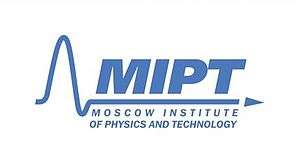 | |
| Motto | Sapere aude |
|---|---|
Motto in English | Dare to know |
| Type | Public |
| Established | 1946 |
| Rector | Nikolay Kudryavtsev |
| Undergraduates | 3319 |
| Postgraduates | 1758 |
| Location | Dolgoprudny, Moscow, Zhukovsky , Russia 55°55′46″N 37°31′17″E |
| Website | phystech |
The main MIPT campus is located in Dolgoprudny,[1] a northern suburb of Moscow. However the Aeromechanics Department is based in Zhukovsky, a suburb south-east of Moscow.
History
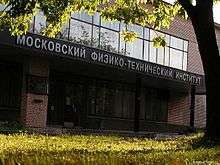
In late 1945 and early 1946, a group of prominent Soviet scientists, including in particular the future Nobel Prize winner Pyotr Kapitsa, lobbied the government for the creation of a higher educational institution radically different from the type established in the Soviet system of higher education. Applicants, carefully selected by challenging examinations and personal interviews, would be taught by and work together with, prominent scientists. Each student would follow a personalized curriculum created to match his or her particular areas of interest and specialization. This system would later become known as the Phystech System.
In a letter to Stalin in February 1946, Kapitsa argued for the need for such a school, which he tentatively called the Moscow Institute of Physics and Technology, to better maintain and develop the country's defense potential. The institute would follow the principles outlined above and was supposed to be governed by a board of directors of the leading research institutes of the USSR Academy of Sciences. On March 10, 1946, the government issued a decree mandating the establishment of a "College of Physics and Technology" (Russian: Высшая физико-техническая школа).[2]
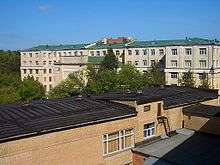
For unknown reasons, the initial plan came to a halt in the summer of 1946. The exact circumstances are not documented, but the common assumption is that Kapitsa's refusal to participate in the Soviet atomic bomb project and his disfavor with the government and communist party that followed, cast a shadow over an independent school based largely on his ideas. Instead, a new government decree was issued on November 25, 1946 establishing the new school as a Department of Physics and Technology within Moscow State University. November 25 is celebrated as the date of MIPT's founding.[3]
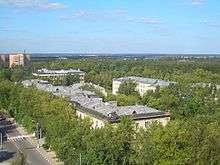
Kapitsa foresaw that within a traditional educational institution, the new school would encounter bureaucratic obstacles, but even though Kapitsa's original plan to create the new school as an independent organization did not come to fruition exactly as envisioned, its most important principles survived intact. The new Department enjoyed considerable autonomy within Moscow State University. Its facilities were in Dolgoprudny (the two buildings it occupied are still part of the present day campus), away from the MSU campus. It had its own independent admissions and education system, different from the one centrally mandated for all other universities. It was headed by the MSU "vice rector for special issues"—a position created specifically to shield the department from the University management.
As Kapitsa expected, the special status of the new school with its different "rules of engagement" caused much consternation and resistance within the university. The immediate cult status that Phystech gained among talented young people, drawn by the challenge and romanticism of working on the forefront of science and technology and on projects of "government importance," many of them classified, made it an untouchable rival of every other school in the country, including MSU's own Department of Physics. At the same time, the increasing disfavor of Kapitsa with the government (in 1950 he was essentially under house arrest) and anti-semitic repressions of the late 1940s made Phystech an easy target of intrigues and accusations of "elitism" and "rootless cosmopolitanism." In the summer of 1951, the Phystech department at MSU was shut down.[4]
A group of academicians, backed by Air Force general Ivan Fedorovich Petrov, who was a Phystech supporter influential enough to secure Stalin's personal approval on the issue, succeeded in re-establishing Phystech as an independent institute. On September 17, 1951, a government decree re-established Phystech as the Moscow Institute of Physics and Technology.[5]
Apart from Kapitsa, other prominent scientists who taught at MIPT in the years that followed included Nobel prize winners Nikolay Semyonov, Lev Landau, Alexandr Prokhorov, Vitaly Ginzburg; and Academy of Sciences members Sergey Khristianovich, Mikhail Lavrentiev, Mstislav Keldysh, Sergey Korolyov and Boris Rauschenbach. MIPT alumni include Andre Geim and Konstantin Novoselov, the 2010 winners of the Nobel Prize in Physics.[6]
The Phystech System
The following is a summary of the key principles of the Phystech System, as outlined by Kapitsa in his 1946 letter arguing for the founding of MIPT:
- Rigorous selection of gifted and creative young individuals.
- Involving leading scientists in student education, in close contact with them in their creative environment.
- An individualized approach to encourage the cultivation of students' creative drive and to avoid overloading them with unnecessary subjects and rote learning common in other schools and necessitated by mass education.
- Conducting their education in an atmosphere of research and creative engineering, using the best existing laboratories in the country.
In its implementation, the Phystech System combines highly competitive admissions, extensive fundamental education in mathematics, as well as theoretical and experimental physics in the undergraduate years and immersion in research work at leading research institutions of the Russian Academy of Sciences starting as early as the second or third year.
Departments
The institute has eleven departments, ten of them with an average of 80 students admitted annually into each.[7]
- Radio Engineering and Cybernetics
- General and Applied Physics
- Aerophysics and Space Research
- Molecular and Biological Physics
- Physical and Quantum Electronics
- Aeromechanics and Flight Engineering
- Applied Mathematics and Control
- Problems of Physics and Power Engineering
- Innovation and High Technology
- Nano-, Bio-, Information and Cognitive Technologies
Admissions
Most students apply to MIPT immediately after graduating from high school at the age of 17. Child prodigies are occasionally admitted at a younger age after skipping grades in school. Because admission is competitive, some of those who are not admitted reapply in subsequent years.
Traditionally, applicants were required to take written and oral exams in both mathematics and physics, write an essay and have an interview with the faculty. The interview has always been an important part of the selection process. Sometimes an applicant with lower exam grades could be admitted and one with higher grades rejected, based solely on the interview results.
In recent years, oral exams have been eliminated, but the interview remains an important part of the selection process.
The strongest performers in national physics and mathematics competitions and IMO/IPhO participants are granted admission without exams, subject only to the interview.
In accordance with the traditions of the Soviet education system, education at MIPT is free for most students. Further, students receive small scholarships (as of 2020, $70–$105 for bachelor's and $110-$140 for master's degree per month[8], depending on the student's performance) and rather cheap (as of 2020, $13-$20[9] per month, depending on location and comfortability) housing on campus, which allows them to study full-time.
Education
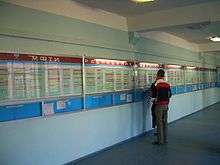
It normally takes six years for a student to graduate from MIPT. The curriculum of the first three years consists exclusively of compulsory courses, with emphasis on mathematics, physics and English. There are no significant curriculum differences between the departments in the first three years. A typical course load during the first and second years can be over 48 hours a week, not including homework. Classes are taught five days a week, beginning at 9:00 am or 10:30 am and continuing until 5:00 pm, 6:30 pm, or 8:00 pm. Most subjects include a combination of lectures and seminars (problem-solving study sessions in smaller groups) or laboratory experiments. Lecture attendance is optional, while seminar and lab attendance affects grades. Andre Geim, a graduate and Nobel prize winner stated "The pressure to work and to study was so intense that it was not a rare thing for people to break and leave and some of them ended up with everything from schizophrenia to depression to suicide."[10]
MIPT follows a semester system. Each semester includes 15 weeks of instruction, two weeks of finals and then three weeks of oral and written exams on the most important subjects covered in the preceding semester.
Starting with the third year, the curriculum matches each student's area of specialization and also includes more elective courses. Most importantly, starting with the third year, students begin work at base institutes (or "base organizations," usually simply called bases). The bases are the core of the Phystech system. Most of them are research institutes, usually belonging to the Russian Academy of Sciences. At the time of enrollment, each student is assigned to a base that matches his or her interests. Starting with the third year, a student begins to commute to their base regularly, becoming essentially a part-time employee. During the last two years, a student spends 4–5 days a week at their base institute and only one day at MIPT.
The base organization idea is somewhat similar to an internship in that students participate in "real work." However, the similarity ends there. All base organizations also have a curriculum for visiting students and besides their work, the students are required to take those classes and pass exams. In other words, a base organization is an extension of MIPT, specializing in each particular student's area of interests.
While working at the base organization, a student prepares a thesis based on his or her research work and presents ("defends") it before the Qualification Committee consisting of both MIPT faculty and the base organization staff. Defending the thesis is a requirement for graduation.
Base organizations
As of 2005, MIPT had 103 base organizations. The following list of institutes is currently far from being complete:
- Center for Arms Control, Energy and Environmental Studies (established 1991) [11]
- Engelhardt Institute of Molecular Biology RAS
- Gromov Flight Research Institute
- Institute for Information Transmission Problems RAS
- Institute for Nuclear Research RAS
- Institute for Physical Problems
- Institute for High Energy Physics (1963)
- Institute for Problems in Mechanics RAS
- Institute for Spectroscopy Russian Academy of Sciences
- Institute for Theoretical and Experimental Physics
- Institute of Biochemical Physics RAS
- Institute of Molecular Genetics RAS
- Institute of Numerical Mathematics RAS
- Institute of Problems of Chemical Physics RAS (1956)
- Institute of Radio Engineering and Electronics of RAS
- Institute of Solid State Physics RAS
- Institute of Synthetic Polymer Materials RAS
- Joint Institute for Nuclear Research
- Kurchatov Institute (formerly Kurchatov Institute of Atomic Energy)
- Landau Institute for Theoretical Physics
- Lebedev Institute of Physics RAS (FIAN)
- Lebedev Institute of Precision Mechanics and Computer Engineering
- N.N. Andreyev Acoustics Institute
- N.N. Semenov Institute of Chemical Physics, RAS
- Nuclear Safety Institute of RAS (IBRAE)
- Shirshov Institute of Oceanology
- Shubnikov Institute of Crystallography RAS
- Space Research Institute RAS (1965)
- Steklov Institute of Mathematics
- Zhukovsky Central Aerohydrodynamic Institute
- and a number of OKBs (experimental design bureaux)
In addition, a number of Russian and Western companies act as base organizations of MIPT. These include:
- 1C Company
- ABBYY
- Competentum Group or Physicon
- NPMP "Concept Consulting"
- Intel
- IPG Photonics
- Kraftway
- MetaSynthesis
- Paragon Software Group
- S.P. Korolev Rocket and Space Corporation Energia
- SWsoft
- Yandex
Degrees and reputation
Before 1998, students could graduate only after completing the full six-year curriculum and defending their thesis. Upon successful graduation, they were awarded a specialist degree in Applied Mathematics and Physics and, beginning in the early 1990s, a Master's degree in Physics.
Since 1998, students have been awarded a Bachelor's degree diploma after four years of study and the defense of a Bachelor's "qualification work" (effectively a smaller and less involved version of the Master's thesis). An estimated 90% of students continue their education after receiving this diploma to complete the full six-year curriculum and receive the Master's degree.
The full course of education at MIPT takes six years to complete, just like an American Bachelor's degree followed by a Master's degree. However, MIPT graduates usually view their training as effectively higher than an American M.S. in Physics. The MIPT curriculum is, indeed, considerably more extensive compared to an average American college.[12] In addition, American M.S. programs usually focus more on classroom education and less on research. There is an opinion that an MIPT specialist/Master's diploma may be roughly equivalent to an American Ph.D. in physics.[13]
Traditional university rankings are based on the universities' research output and prizes won by faculty.[14] In contrast, many distinguished professors teaching at MIPT are officially on staff at the base institutes (see above) rather than MIPT itself. Student research work is also typically carried out outside of MIPT and published research results do not mention MIPT. In effect, many MIPT professors are not considered as such for the rankings and student research is not earning any ranking points for MIPT.
People
Demographics
About 15% of all students are residents of Moscow and nearly the same are from Moscow region; the rest come from all over the former Soviet Union. Most out-of-town students live in the dormitory on campus for at least the first 4 years. Many senior students move to another dormitory in Moscow, while some either move to base institute dormitories or rent apartments.
The student population is almost exclusively male, with the female/male ratio in a department rarely exceeding 15% (seeing 2–3 women in a class of 80 is not uncommon). In recent years, this situation has changed and in 2009 more than 20% of first year students were females.[15]
There are no reliable statistics on the careers of MIPT graduates. Prior to the collapse of the Soviet Union, most MIPT graduates continued research at their base institutes or found jobs in OKBs. Nowadays, many graduates become business people or software engineers. Some, especially high-performing students of prestigious departments (e.g. DGAP, DCAM), go on to get post-graduate degrees from foreign universities. In the past, some students were known to have been admitted into Ph.D. programs of American universities as early as after their 3rd year of education. Many MIPT alumni hold faculty positions in the world's top Universities, including Harvard, University of Manchester, Princeton University, MIT, Columbia, Stanford, Brown, University of Chicago, University of Illinois at Urbana–Champaign and the University of Wisconsin–Madison.
Famous faculty and alumni
Scientists
Nobel Prize winners
- Lev Landau – prominent Russian physicist, Nobel Prize 1962[16]
- Pyotr Kapitsa – discovered superfluidity,[17] Nobel Prize 1978[18]
- Nikolay Semyonov – best known for his work on chain reactions, Nobel Prize 1956[19] in chemistry
- Vitaly Ginzburg – prominent physicist, Nobel Prize 2003,[20] co-developer of the Soviet H-bomb
- Alexandr Prokhorov – a co-inventor of the laser, Nobel Prize 1964[21]
- Sir Andrey Geim – discoverer of graphene, gecko tape and levitating frogs; Fellow of the Royal Society, Nobel Prize in physics, 2010
- Sir Konstantin Novoselov – Nobel Prize in physics for graphene research, 2010
Other prominent scientists
- Boris Babayan – a pioneer of Russian supercomputers, an Intel Fellow 2004[22] and software architect
- Oleg Belotserkovsky – rector of MIPT (1962–1987), prominent mathematician and mechanician
- Andrei Bolibrukh – a mathematician who solved Hilbert's twenty-first problem in 1989[23]
- Nikolai Borisovich Delone – a physicist who discovered multiphoton ionization.
- Yurij Ionov – discovered genome instability as a mechanism in colonic carcinogenesis[24]
- Alexander Holevo – a mathematician known for Holevo's theorem
- Leonid Khachiyan – famous for his Ellipsoid method for linear programming, Fulkerson Prize (1982)
- Sergei Lebedev – invented MESM (1950) and BESM (1953) mainframe computers
- Alexander Migdal – defined 2D quantum gravity,[25] 2D/3D visualization software and internet entrepreneur
- Viatcheslav Mukhanov – contributor to the theory of cosmological inflation
- Sergey Nikolsky – prominent Russian mathematician
- Alexander Polyakov – quantum field theory classics,[26][27][28][29][30] Dirac'86[31] and Lorentz'94 Medals
- Emmanuel Rashba – known for the Rashba effect and prediction of the Electric dipole spin resonance,[32] Lenin Prize.
- Boris Rauschenbach – rocket scientist in control engineering, responsible for the first photographs of the far side of the Moon (1959)
- Mikhail Shifman – non-perturbative QCD classics,[33][34] Sakurai Prize (1999), Lilienfeld Prize (2006)
- Rashid Sunyaev – an author of the Sunyaev-Zel'dovich effect and a model of black holes[35]
- Victor Veselago – put forward a theory[36] for metamaterials of the 21st century in 1967
- Alexander Zamolodchikov – quantum field theory classics[27][29][37]
Cosmonauts
- Yuri Baturin – cosmonaut (1998 and 2001 missions), former head of national security
- Aleksandr Kaleri – cosmonaut, spent 609 days on the Mir and ISS space stations
- Aleksandr Serebrov – cosmonaut, 373 days in outer space (four flights)
Famous political and business persons
- Alexander Abramov – founder of Evraz Group, #137 on the Forbes list
- Boris Aleshin – deputy prime minister in Russian government (2003–2004), president of AvtoVAZ (2007–2009), general director of TsAGI (2009–)
- Serguei Beloussov – Russian businessman, entrepreneur, investor and speaker, founder of Acronis, executive chairman of the board and chief architect of Parallels, Inc.
- Aleksandr Frolov – CEO of Evraz Group, #390 on the Forbes list
- Mikhail Kirpichnikov – Russian Science & Technology Minister (1998–2000), dean of Biology at MSU (2006–)
- Pavlo Klimkin – Minister of Foreign Affairs of Ukraine.[38]
- Alex Konanykhin – Entrepreneur, former banker, former Russian oligarch, with political asylum in the United States.
- Nikolay Kudryavtsev – rector of MIPT (1997–)
- Boris Saltykov – Russian Minister of Science and Technology (1991–1996)
- Natan Sharansky – Israeli Cabinet Minister (1996–2005), US Congressional Gold Medal (1986)
- Sergei Guriev – Economist, former rector of New Economic School (2004 - 2013)
- Volodymyr Shkidchenko – Defense Minister of Ukraine (2003–2004), four-star general of the Army
- Nikolay Storonsky – founding CEO of British fintech company Revolut (2015–)
- Ratmir Timashev – American and Swiss businessman, entrepreneur, investor, co-founder and CEO of Veeam and Aelita Software Corporation, founder of ABRT Fund.
- David Yang – developer of Cybiko, founder of ABBYY company
- Dmitry Zelenin – governor of Tverskaya Oblast (2004–2011)
References
- "Google Maps". Google Maps. Retrieved 31 October 2017.
- "Повесть древних времён или предыстория Физтеха", Ch 3 Archived 2006-10-11 at the Wayback Machine by N. V. Karlov.
- "Повесть древних времён или предыстория Физтеха", Ch 4 by N.V. Karlov.
- "Повесть древних времён или предыстория Физтеха", Ch 6 by N.V. Karlov.
- "Повесть древних времён или предыстория Физтеха", Ch 7 by N.V. Karlov.
- "The Nobel Prize in Physics 2010". nobelprize.org. Retrieved 31 October 2017.
- "2006 Admission Statistics (in Russian)". Archived from the original on 20 April 2012. Retrieved 31 October 2017.
- Scholarships
- Residence Prices
- "Renaissance scientist with fund of ideas". Scientific Computing World. 15 July 2006.
- "Summer Symposiums History". International Summer Symposium on Science and World Affairs. Retrieved 11 November 2013.
- "Phystech's Educational Approach". Archived from the original on 31 January 2011. Retrieved 31 October 2017.
- "Academicians, Hierarchy and Titles in Russian Science, MIPT Web Site". Archived from the original on 2 May 2006. Retrieved 31 October 2017.
- "Shanghai Jao Tong University ranking methodology". Archived from the original on 7 May 2006. Retrieved 31 October 2017.
- "MIPT 2009 admittance statistics". Archived from the original on 13 December 2009. Retrieved 31 October 2017.
- "Nobel Prize in Physics 1962 – Presentation Speech". nobelprize.org. Retrieved 31 October 2017.
- Kapitza P (1938). "Viscosity of liquid helium below the λ-point". Nature. 141 (3558): 74. Bibcode:1938Natur.141...74K. doi:10.1038/141074a0.
- "Press Release: The 1978 Nobel Prize in Physics". nobelprize.org. Retrieved 31 October 2017.
- Ölander, A. "The Nobel Prize in Chemistry 1956: Award ceremony speech". nobelprize.org.
- "Press Release: The 2003 Nobel Prize in Physics". nobelprize.org. Retrieved 31 October 2017.
- "Nobel Prize in Physics 1964 – Presentation Speech". nobelprize.org. Retrieved 31 October 2017.
- "Intel Fellow – Boris A. Babayan". www.intel.com. Retrieved 31 October 2017.
- Bolibrukh AA (1995). 21st Hilbert Problem for Linear Fuchsian Systems. Amer Mathematical Society. ISBN 0-8218-0466-9.
- Ionov Y, Peinado MA, Malkhosyan S, Shibata D, Perucho M (1993). "Ubiquitous somatic mutations in simple repeated sequences reveal a new mechanism for colonic carcinogenesis". Nature. 363 (6429): 558–61. Bibcode:1993Natur.363..558I. doi:10.1038/363558a0. PMID 8505985.
- Gross DJ, Migdal AA (1990). "Nonperturbative two-dimensional quantum gravity". Phys. Rev. Lett. 64 (2): 127–30. Bibcode:1990PhRvL..64..127G. doi:10.1103/PhysRevLett.64.127. PMID 10041657.
- Gubser SS, Klebanov IR, Polyakov AM (1998). "Gauge theory correlators from non-critical string theory". Phys. Lett. B. 428 (1–2): 105–14. arXiv:hep-th/9802109. Bibcode:1998PhLB..428..105G. doi:10.1016/S0370-2693(98)00377-3.
- Belavin AA, Polyakov AM, Zamolodchikov AB (1984). "Infinite conformal symmetry in two-dimensional quantum field theory" (PDF). Nucl. Phys. B. 241 (2): 333–80. Bibcode:1984NuPhB.241..333B. doi:10.1016/0550-3213(84)90052-X.
- Polyakov AM (1981). "Quantum geometry of bosonic strings". Phys. Lett. B. 103 (3): 207–10. Bibcode:1981PhLB..103..207P. doi:10.1016/0370-2693(81)90743-7.
- Knizhnik VG, Polyakov AM, Zamolodchikov AB (1988). "Fractal structure of 2d—quantum gravity". Mod. Phys. Lett. A. 3 (8): 819–26. Bibcode:1988MPLA....3..819K. doi:10.1142/S0217732388000982.
- Polyakov AM (1977). "Quark confinement and topology of gauge theories". Nucl. Phys. B. 120 (3): 429–58. Bibcode:1977NuPhB.120..429P. doi:10.1016/0550-3213(77)90086-4.
- "Dirac Medallists 1986 — ICTP Portal". prizes.ictp.it. Retrieved 31 October 2017.
- E. I. Rashba, Sov. Phys. Solid State 2, 1109 (1960)
- Shifman MA, Vainshtein AI, Zakharov VI (1979). "QCD and resonance physics: The ρ-ω mixing". Nucl. Phys. B. 147 (5): 519–34. Bibcode:1979NuPhB.147..519S. doi:10.1016/0550-3213(79)90024-5.
- Shifman MA, Vainshtein AI, Zakharov VI (1979). "QCD and resonance physics. Applications". Nucl. Phys. B. 147 (5): 448–518. Bibcode:1979NuPhB.147..448S. doi:10.1016/0550-3213(79)90023-3.
- Shakura NI, Syunyaev RA; Sunyaev (1973). "Black holes in binary systems. Observational appearance". Astron. Astrophys. 24: 337–55. Bibcode:1973A&A....24..337S.
- Veselago VG (1968). "The electrodynamics of substances with simultaneously negative values of ε and μ". Sov. Phys. Usp. 10 (4): 509–14. Bibcode:1968SvPhU..10..509V. doi:10.1070/PU1968v010n04ABEH003699.
- Knizhnik VG, Zamolodchikov AB (1984). "Current algebra and Wess-Zumino model in two dimensions". Nucl. Phys. B. 247 (1): 83–103. Bibcode:1984NuPhB.247...83K. doi:10.1016/0550-3213(84)90374-2.
- Parliament appoints Klimkin as Ukrainian foreign minister, Interfax-Ukraine (19 June 2014)
External links
| Wikimedia Commons has media related to Moscow Institute of Physics and Technology. |
- Official website (in English)
- Official website (in Russian)